Are you hot? Let's go to see the stars!! - Hai caldo? Vai a vedere le stelle!! [ENG/ITA]
[ENG]
Season:
summer
Weather conditions:
sky almost always clear and mostly unbearable muggy heat!!
Consequences:
widespread mental and physical discomfort, nervousness and accelerated neural degeneration, but also a great desire to go out, have fun and meet people!!
Solution (for the suffering ones):
obviously finding a cool and ventilated place, maybe a vacation in the mountains or being immersed in the sea water.
Solution (for the non-suffering ones):
none, they don't need it!!
Fortunately I am part of the non-suffering ones and for some time I have been going out every night trying to enjoy myself as much as possible. But I noticed, at least in my city, that people seem to go out mainly only on Friday night and especially on Saturday, not that before it was different but I have the impression that this phenomenon is a bit increased.
I understand that the main cause of this behavior is the work but personally I don't understand why.
"Ok, tomorrow morning you have to get up at 7:00 am? Well, then make dinner early and get out anyway, maybe you will come back home at 11.00 pm! It's not mandatory to hang around until 5:00 am!! "
isn't it? Am I wrong?
However, due to the fact that on weekdays no one ever comes out and that I have become allergic to staying at home, a few nights ago I decided to go to the hills in a dark enough place to take photos to the stars.
And then I take this opportunity to show you some.
I made them with my mother's Canon EOS 500D reflex camera.
Here it is the first one
Technical features: 15 sec of exposure, focal F 3.5 and ISO-800
Here we can see the constellation of Scorpio (Scorpius in latin) with its brightest star called Atares which is a red supergiant, next to the planet Jupiter.
Since very few people today know the constellations, I also put this other image I made.
p.s. the stars marked in green are not visible in this photo but they should be placed somewhere in those places.
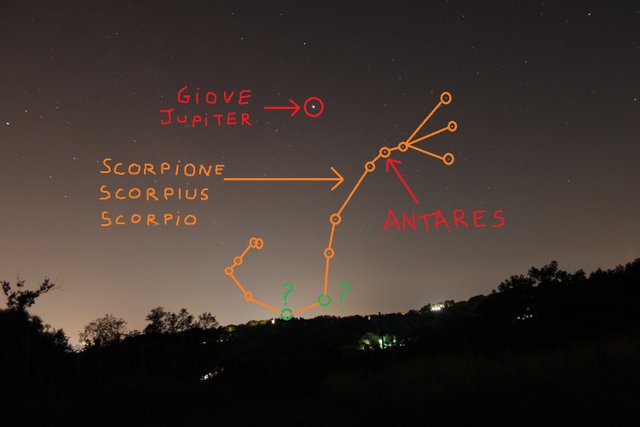
Here it is the second one:
Technical features: 13 sec of exposure, focal F 5.6 and ISO-1600
In this one, I zoomed to the maximum with the camera lens, centering Jupiter. Unfortunately I can't tell you how many magnification are, but they were able to show me a satellite of Jupiter. Which we can see in this other image taken from the first, which I enlarged with the PC.
Here it is:
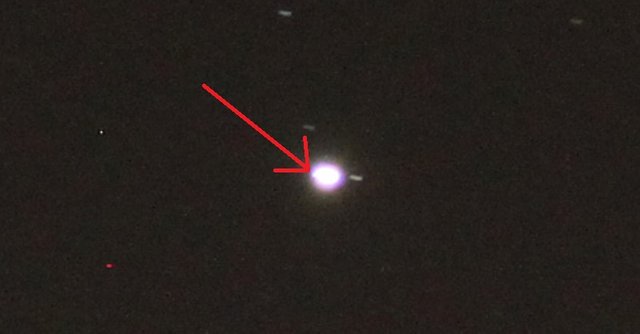
Did you notice that little protuberance? That's a satellite of Jupiter.
Now let's move on to the Milky Way.
Here it is:
Technical features: 30 sec of exposure, focal F 3.5 and ISO-800
Of course it's not like the ones you find on the net, but it's still incredible how many more stars the camera can capture compared to the human eye. Next time when I have time I will go to the mountains to get more quality.
Do you see the Milky Way? A little bit isn't it? It is there:
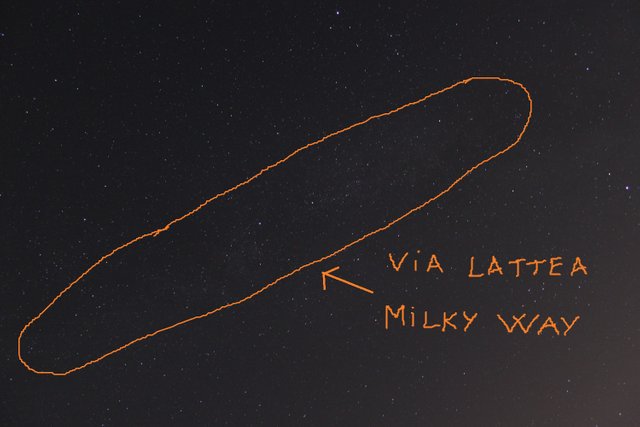
Perhaps you can see better in this other photo that came out a little clearer, because I increased the sensitivity of the film going from ISO-800 to ISO-3200
better?
And if by chance you want to find it in the sky, then you have to look for the constellation of the Swan (Cygnus in latin) with its brightest star called Deneb which is a white supergiant.
You do not know where the Swan is, look here, I have marked for you the main stars
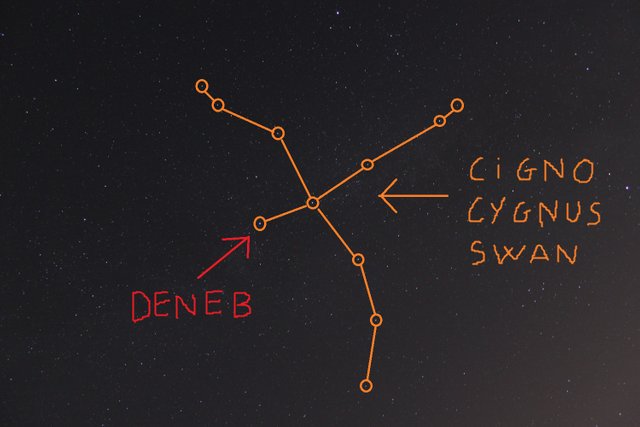
Now let's move on to a classic, the stars rotating around the Pole Star. I made three photos with increasing exposure times. I had never done them and I was fascinated by the result as a child watching a magic show.
Here they are:
Technical features: 6 minutes of exposure, focal F 6.3 and ISO-100
Technical features: 20 minutes of exposure, focal F 6.3 and ISO-100
Technical features: 35 minutes of exposure, focal F 6.3 and ISO-100
These are the ones I prefer, the next time I will go in the mountains nearby because I am sure they will come out much better without the disturbance of the city lights.
See you next time and for all the suffering ones, don't stay at home at night and have fun!!
[ITA]
Stagione:
estate
Condizioni Metereologiche:
cielo quasi sempre sereno e soprattutto caldo afoso insopportabile!!
Conseguenze:
diffuso malessere psico-fisico, nervosismo galoppante e accelerata degenerazione neurale, ma anche tanta voglia di uscire, divertirsi e conoscere gente!!
Soluzione (per i sofferenti):
ovviamente trovare un luogo fresco e ventilato, magari una vacanza in montagna o stare immersi nell'acqua del mare.
Soluzione (per i non sofferenti):
nessuna, non ne hanno bisogno!!
Fortunatamente faccio parte dei non sofferenti e da un pò di tempo sto uscendo tutte le sere cercando di divertirmi il più possibile. Però ho notato, perlomeno nella mia città, che la gente sembra uscire in massa solamente il venerdì sera e soprattutto il sabato, non che prima fosse diverso ma ho l'impressione che questo fenomeno sia un pò aumentato. Capisco che la causa principale di questo comportamento sia il lavoro ma personalmente non ne capisco il motivo.
"Ok, domani mattina ti devi alzare alle 7:00? Bene allora fai cena presto e esci lo stesso, magari alle 23:00 te ne torni a casa! Non è mica obbligatorio stare in giro fino alle 5:00 di mattina!!"
No? sbaglio?
Comunque a causa del fatto che nei giorni feriali non esce mai nessuno e che io sono diventato allergico a restare a casa, qualche sera fa ho deciso di andare in collina in un posto abbastanza buio per scattare delle foto alle stelle.
E allora sfrutto questa occasione per mostrarvene alcune.
Le ho realizzate con la macchina fotografica reflex Canon EOS 500D di mia madre.
Ecco la prima:
Caratteristiche tecniche: 15 sec di esposizione, focale F 3.5 e ISO-800
Qui possiamo vedere la costellazione dello Scorpione con la sua stella più luminosa chiamata Atares che è una supergigante rossa, con affianco il pianeta Giove.
Siccome pochissima gente ai giorni nostri conosce le costellazioni, vi metto anche quest'altra immagine da me realizzata.
p.s. le stelle segnate in verde non sono visibili in questa foto ma più o meno dovrebbero essere collocate da quelle parti.

Ecco la seconda:
Caratteristiche tecniche: 13 sec di esposizione, focale F 5.6 e ISO-1600
In questa invece ho zummato al massimo con l'obbiettivo della macchina, centrando Giove. Purtroppo non so dirvi quanti ingrandimenti sono, ma sono stati in grado di mostrarmi un satellite di Giove. Il quale lo possiamo intravedere in quest'altra immagine ricavata dalla prima, che ho ingrandito col pc.
Eccola:

Avete notato quella piccola pretuberanza ? Quello è un satellite di Giove.
Ora invece passiamo alla Via Lattea.
Eccola qua:
Caratteristiche tecniche: tempo di esposizione 30 sec, focale F3.5 e ISO-800
Certo non è come quelle che trovate in rete, ma è comunque incredibile quante stelle in più riesce a catturare la macchina fotografica rispetto all'occhio umano. La prossima volta quando avrò tempo le andrò a fare in montagna per ottenere una maggiore qualità.
La vedete la Via Lattea? Poco vero? Si trova qua:

Forse si vede meglio in quest'altra foto che è venuta un pò più chiara, perchè ho aumentato la sensibilità della pellicola passando da ISO-800 a ISO-3200
Meglio?
E se per caso la volete trovare nel cielo, allora dovete cercare la costellazione del Cigno con la sua stella più luminosa chiamata Deneb la quale è una supergigante bianca.
Non sapete dove sia il Cigno tranquilli guardate qua, vi ho segnato le stelle principali

Ora invece passiamo ad un classico, le stelle in rotazione attorno alla stella polare. Ne ho realizzate tre con tempi di esposizione crescenti. Non le avevo mai fatte e sono rimasto affascinato dal risultato come un bambino che assiste ad uno spettacolo di magia.
Eccole:
Caratteristiche tecniche: 6 minuti di esposizione, focale F 6.3 e ISO-100
Caratteristiche tecniche: 20 minuti di esposizione, focale F 6.3 e ISO-100
Caratteristiche tecniche: 35 minuti di esposizione, focale F 6.3 e ISO-100
Queste sono quelle che preferisco, la prossima volta le andrò a fare nelle montagne qua vicino perchè sono sicuro che verranno fuori decisamente meglio senza il disturbo delle luci della città.
Alla prossima e per tutti i sofferenti non statevene a casa uscite la sera e divertitevi!!
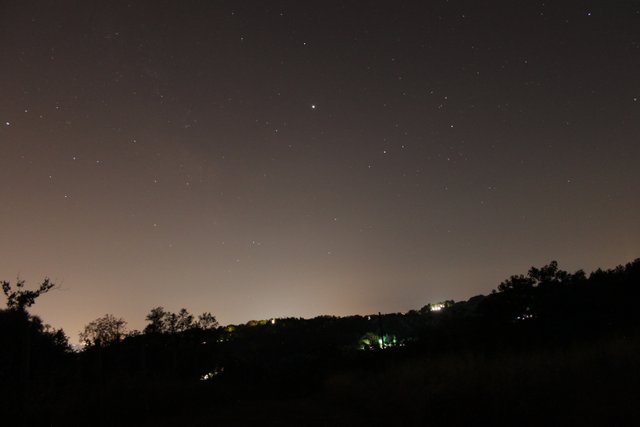
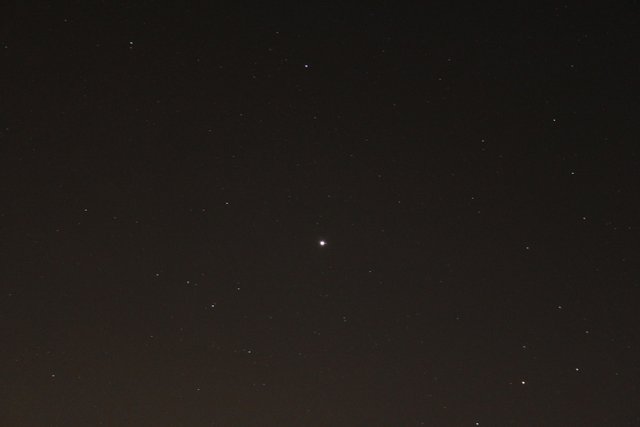
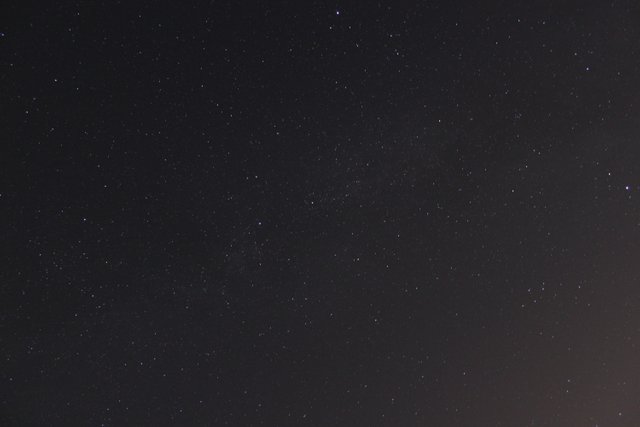
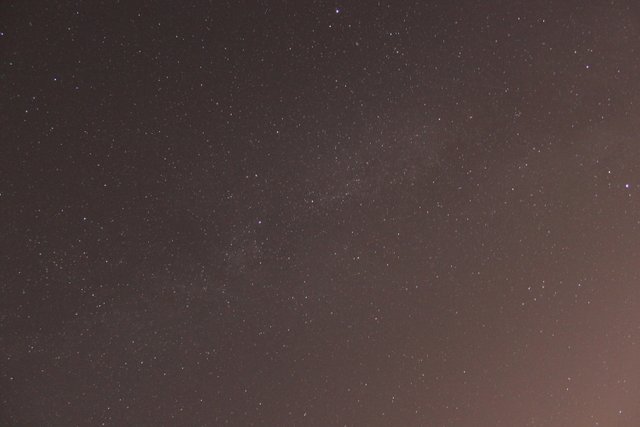
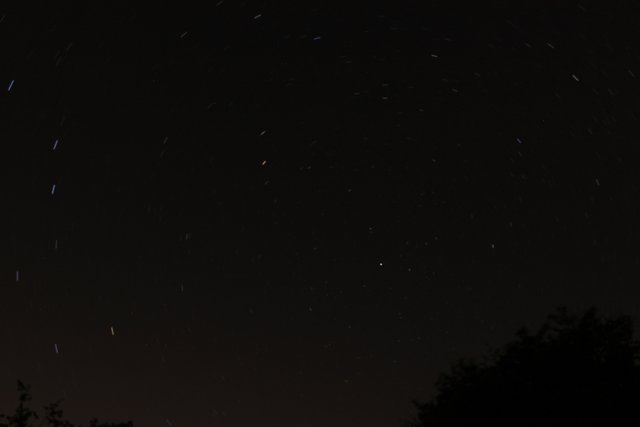
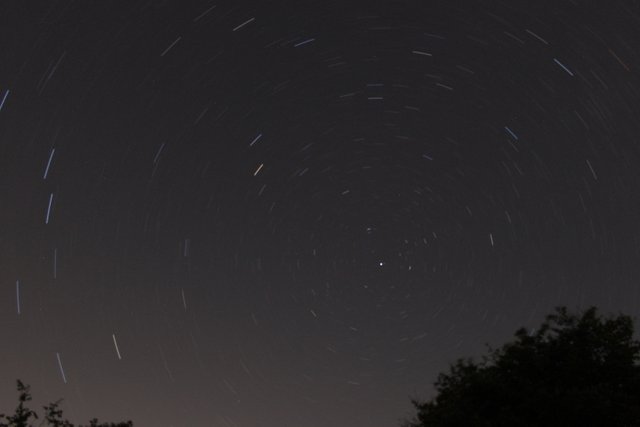
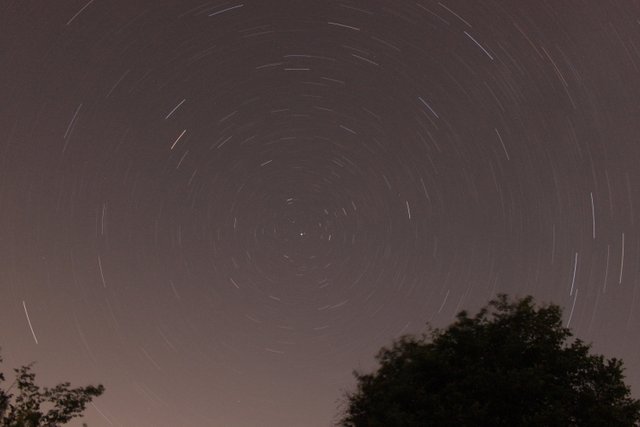
A sky filled with stars can be so pretty - my father did always point out to us when possible where the stellar signs were :)
Lovely!! :) You are lucky!! In my case it is the opposite!! I started to watch the sky at the age of 12 and since then I have shared my knowledge with my friends and parents :)
This post was selected, voted and shared by the discovery-it curation team in collaboration with the C-Squared Curation Collective. You can use the #Discovery-it tag to make your posts easy to find in the eyes of the curator. We also encourage you to vote @c-squared as a witness to support this project.
Hi, @lallo!
You just got a 0.35% upvote from SteemPlus!
To get higher upvotes, earn more SteemPlus Points (SPP). On your Steemit wallet, check your SPP balance and click on "How to earn SPP?" to find out all the ways to earn.
If you're not using SteemPlus yet, please check our last posts in here to see the many ways in which SteemPlus can improve your Steem experience on Steemit and Busy.